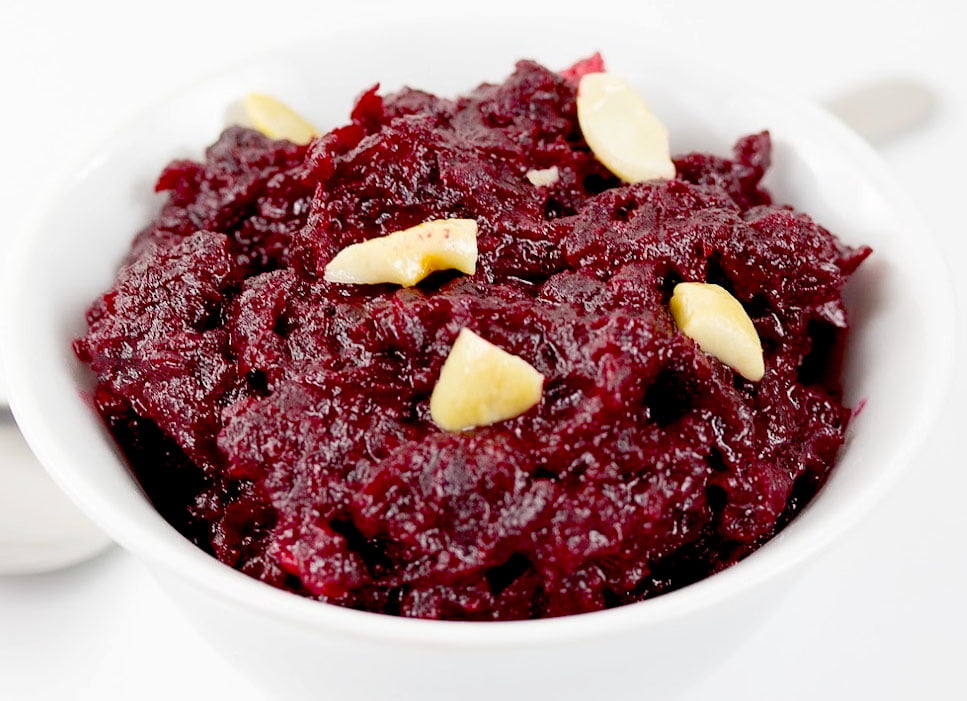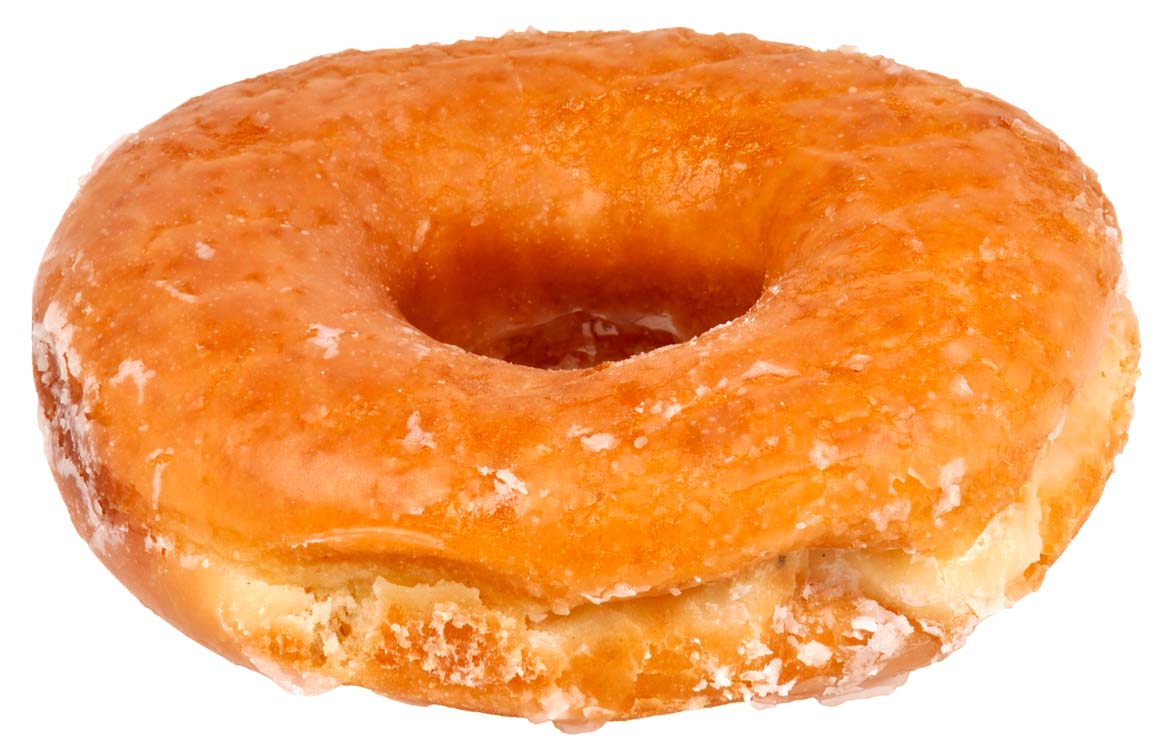Sweet Pongal, How to Make Sweet Pongal Recipe, Jaggery Pongal Recipe
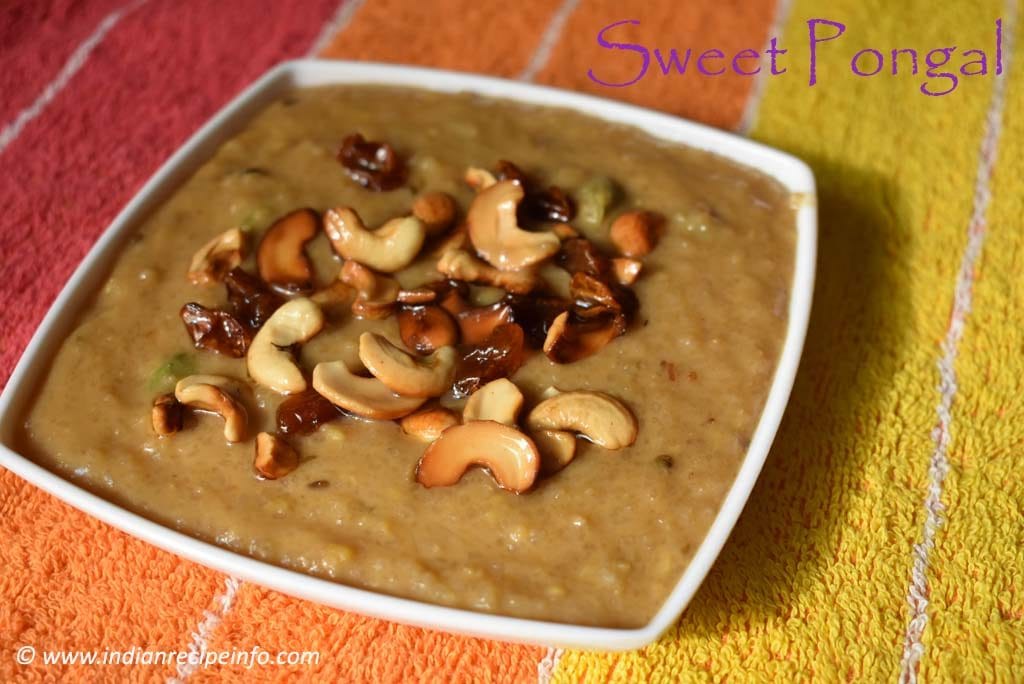
Sweet Pongal Recipe, also known as Sakkarai Pongal, is a traditional South Indian dessert that originated in the state of Tamil Nadu. It is typically prepared during festivals like Pongal, Navratri, and Diwali or other special occasions.
Sweet Pongal Recipe is made by cooking rice and moong dal with jaggery, milk, and flavored with cardamom and ghee. It is a sweet and flavorful dish that is enjoyed by people of all ages.
The dish has a special significance in Tamil Nadu as it is a part of the harvest festival, Pongal. Pongal is celebrated in mid-January, and Sweet Pongal is one of the main dishes that is prepared during the festival.
Sweet Pongal is known for its creamy and pudding-like texture, and the combination of sweet jaggery and aromatic cardamom adds a unique flavor to the dish. It is usually served as a dessert or as a special offering to the deities in Hindu temples.
Overall, Sweet Pongal Recipe is a delicious and popular dessert in South India that is loved by people of all ages.
You may also like to check Khara Pongal and Bellam Undrallu recipes.
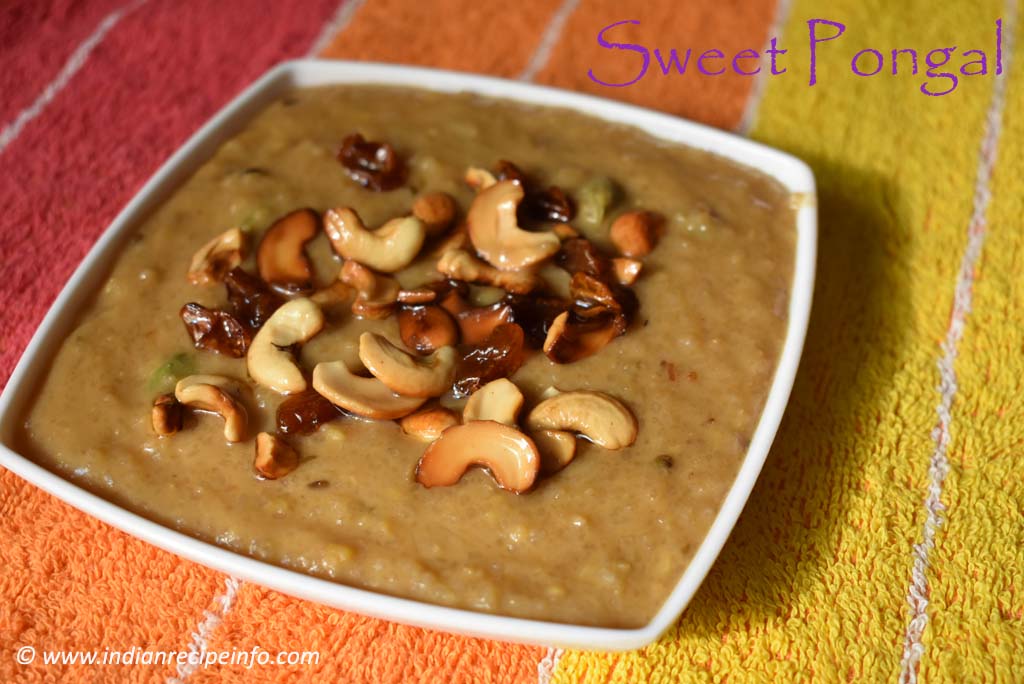
Sweet Pongal, How to Make Sweet Pongal Recipe, Jaggery Pongal Recipe
Ingredients
- Moong dal – 1/2 cup.
- Rice – 1/2 cup.
- Milk – 1 glass 100 ml.
- Fresh Coconut – a small piece optional
- Cashew – 2 tbsp
- Jaggery/sugar – As per your taste
- Raisins khish-mish – dry grapes – 1 tbsp.
- Cardamom – 2 no.
- Ghee – 1 tbsp.
- Salt – 1/2 tbsp.
- Water – to boil rice and dal.
Instructions
How to Make Sweet Pongal Recipe:
- Roast moong dal till you can experience its aroma.
- Soak dal and rice separately for 10 minutes.
- Clean both dal and rice and cook by adding 3 cups of water.
- In a saucepan heat ghee and fry raisins and cashew nuts till they turn a golden brown color.
- When dal and rice are almost cooked, add jaggery, salt and cardamom powder.
- Mix all ingredients and add milk stirring constantly so that you get creamy brown output.
- Garnish Sweet Pongal Recipe with fried cashew and raisins.
Recipe Video
How to Make Sweet Pongal Recipe:
- Fry the moong dal (before washing) till it becomes little light brown (it will start smelling).
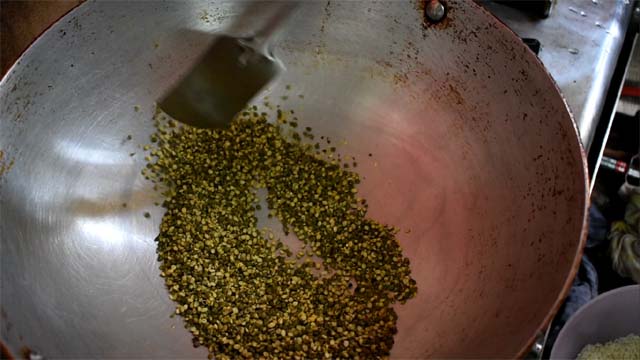
- Then soak rice and dal individually for 10 minutes.

Note: If you are using native moong dal then you have to remove the skin by washing them.
- Thoroughly wash and keep it in a cooker/ pan with little water and cook
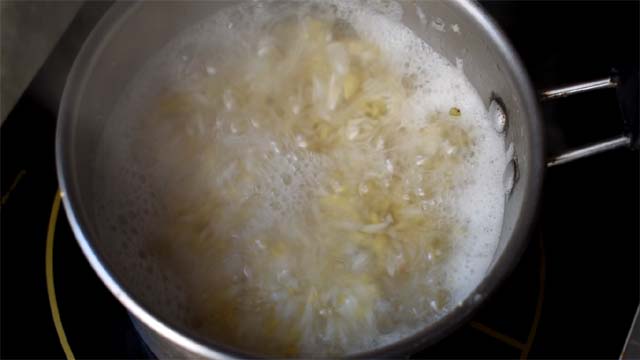
- Add 1 tbsp. ghee and fry cashew and raisins to golden brown color.
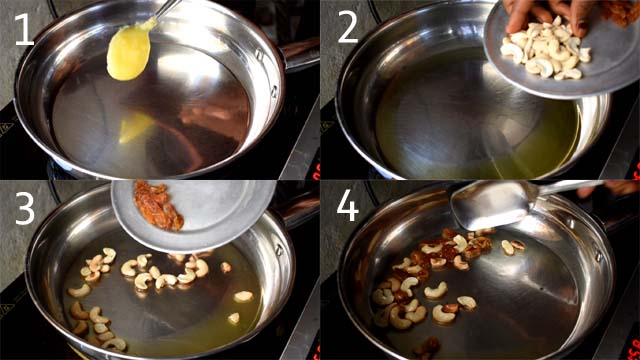
- Break the jaggery and put it in water (very little) and make a syrup. (If you are using an ordinary one)
- In our recipe, I used branded jaggery so I have used it directly.
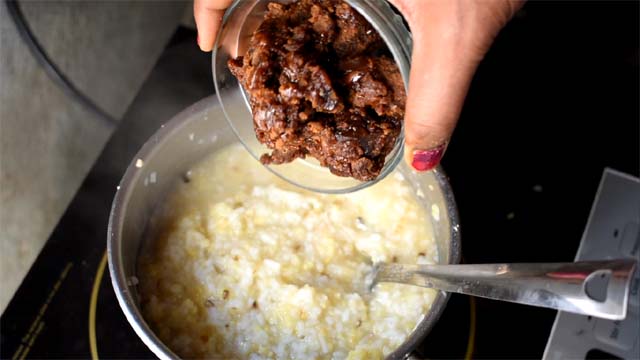
Tip: Do it separately because sometimes jaggery has mud and stones. Or you can even use Sugar.
Note: Add jaggery syrup after the rice is almost cooked because if you add it to rice will not cook properly
- Cush green cardamom and add to sweet Pongal.
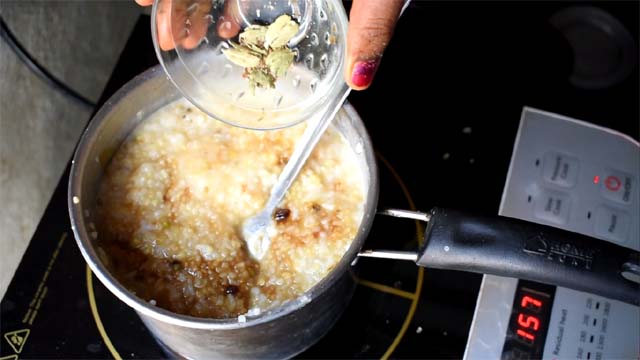
- Add 1/2 tbsp. salt.
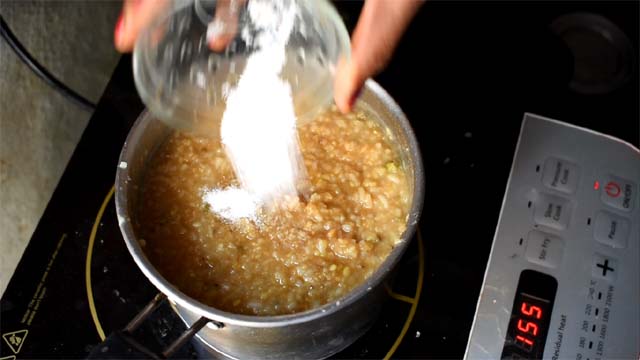
- Add milk when the rice is almost done or else the milk may break.
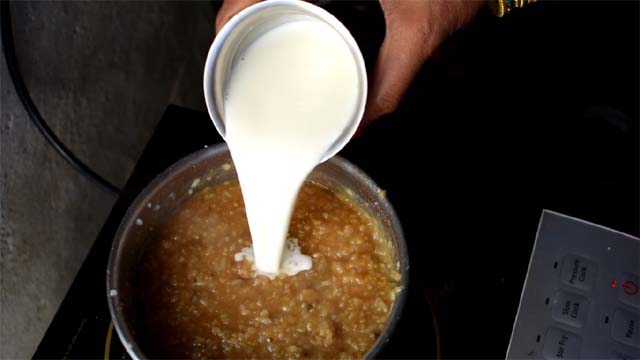
- Cook for a minute so that milk is distributed evenly.
Tip: At this stage, you can add little ghee and fried coconut, cashews and raisins or add them while garnishing.
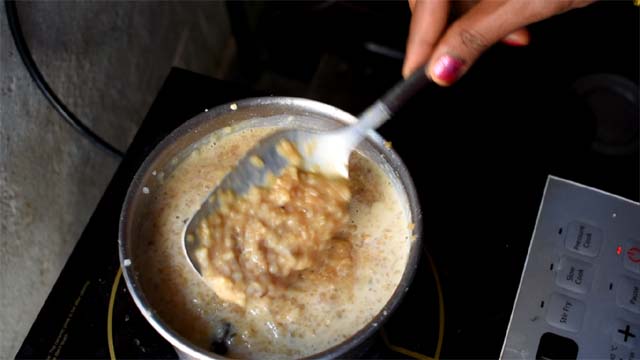
- Sweet Pongal Recipe is ready, garnish with cashew and raisins.
Nutritional facts about our Recipe:
- Mung bean has an excellent source of many minerals, such as calcium, iron, and potassium.
- It is popular as the perfect food for reducing weight
- It is a rich source of protein and fiber
- Jaggery is made in a natural way and no chemicals are used for its processing
- Magnesium present in jaggery strengthens our nervous system
- Jaggery also along with selenium acts as an antioxidant
- Potassium and a low amount of sodium present in jaggery help maintain the acid balance in the body cells
- Cashew nuts also have a fatty acid, which lowers the risk of heart disease
- Cashew nuts have a high energy density and a high amount of dietary fiber
- Milk is the best source of calcium supply to our body.
- It is rich in calcium, which is an essential element for the growth and proper development of strong bone structure
- Milk is an excellent source for dental health, as it protects the enamel surface against acidic substances
